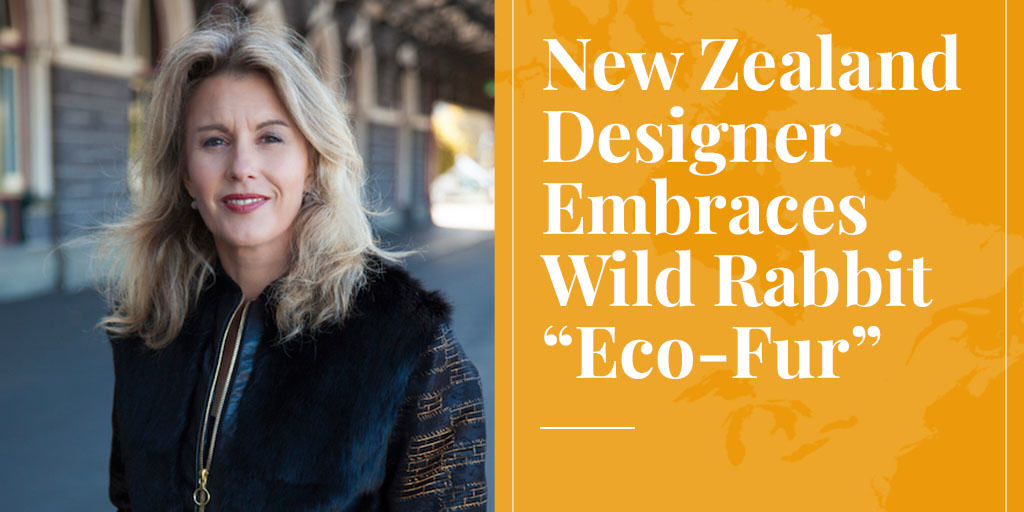
We’re used to hearing polarised arguments about fur, either strongly in favour or strongly against. But many people hold views that fall somewhere in between. One such person is fashion designer Jane Avery, from Dunedin, New Zealand, who is garnering attention for her work with just one type of fur, wild rabbit, under the brand name Lapin (French for rabbit). So is she pro-fur or something quite different? Let’s find out …
Truth About Fur: According to Lapin’s website, you specialize in “limited edition, bespoke and one-of-a-kind garments.” Can you describe some of your garments?
Jane Avery: The coats and jackets I have made to date are a combination of New Zealand wild rabbit fur and beautiful top-quality fabrics. When I started out with this concept three years ago I used appropriate fabrics to hand in my stash. I also had the opportunity to travel to India where I sourced heavy silk vintage saris and traditional embroidered woollen textiles. What resulted was a collection of one-of-a-kind creations. I also make limited-edition, made-to-measure bespoke pieces incorporating new fabrics such as 100% wools.
I live in a cold part of New Zealand and creating coats with exceptional warmth yet still retaining elegance and indulgence in gorgeous textiles is my aim. My original concept was to make garments using rabbit fur panels for yokes, collars, cuffs and upper shoulders. The furrier I work with prepares these for me. The fabric sections are insulated with a 50% cotton 50% wool batting so they can match the warmth given by the fur. The same goes for the insulated sleeves of Lapin bomber jackets which have rabbit fur bodices trimmed with leather.
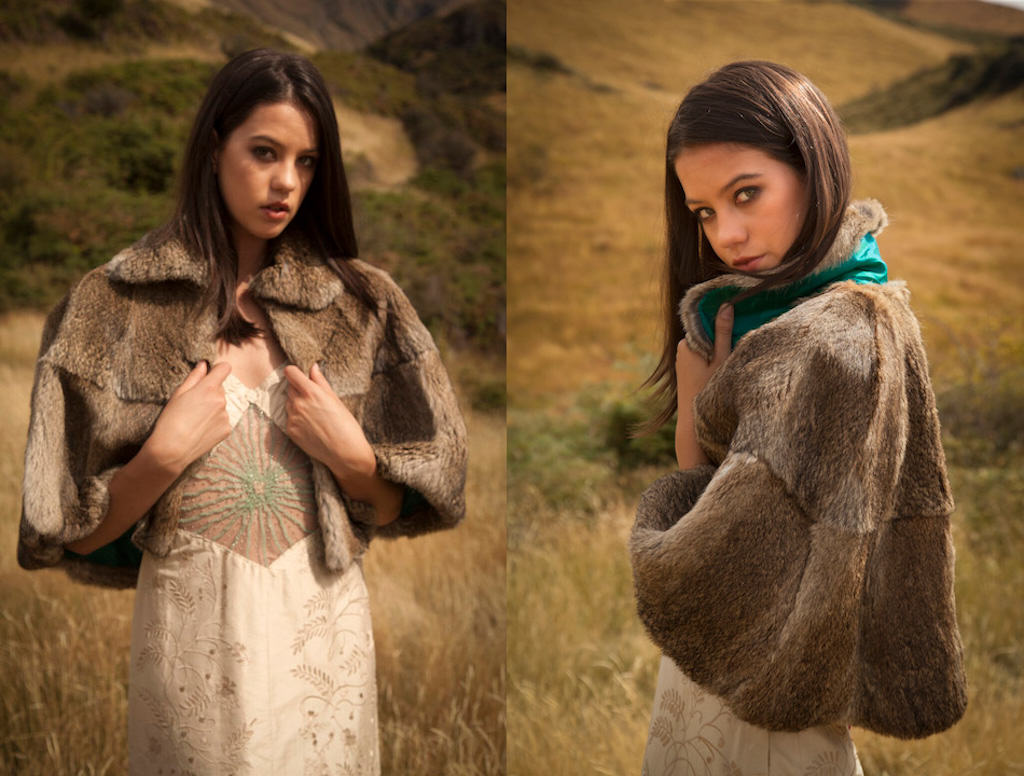
TaF: Tell us about the production process. How many hours go into each garment and do your prices reflect this?
Jane Avery: There is a lot of hand preparation before the sewing machine gets involved. Because fur isn’t sewn with seams like fabric is, I turn in and hand-baste the seam allowances on the fabrics in order to create clean, secure edges to attach to the fur. It’s an example of slow fashion in action and it’s certainly not high tech. Some coats can take up to 50 hours to make.
It’s been an intense development process (I am essentially a self-taught sewer of over 20 years) and I’m quite the perfectionist. There’s extensive handwork tailoring and securing the inside of the garment before the coat lining is bagged out and the inner sleeve is hand-sewn shut. What results is a highly finished garment that’s as close to perfect as I can make it.
Of course this attention to detail and made-to-measure process is reflected in the eventual price of the garment. Also the quality of the textiles and the fact that the fur passes through the hands of my rabbiter, tanner and furrier before it gets to me puts Lapin pieces in a higher price bracket.
SEE ALSO: I’m an artisan designer: Fur and leather keep me warm.
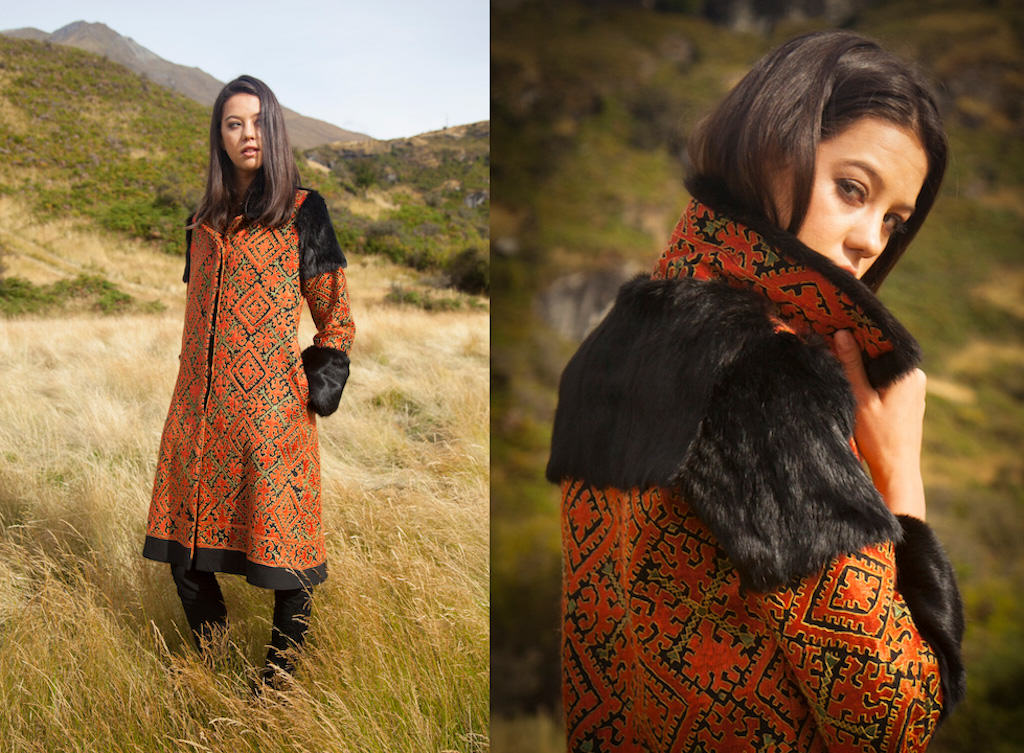
TaF: Who are your clients?
Jane Avery: My clients to date have been people who recognise the skill and dedication in crafting a Lapin piece and want to invest in something special that, well cared for, will take them through many years of pleasurable wearing. It’s my hope that Lapin pieces will become heirlooms handed between generations. For the vintage fabrics I’ve been repurposing, such as the saris and woollen paisleys, this has particular resonance. I adore the concept of well-preserved, pre-loved antique fabrics being given new purpose and continuing their usefulness and beauty in companionship with New Zealand Wild Rabbit Eco-Fur.
TaF: Historically, before the expansion of fur farming made mink and fox more affordable, rabbit was called “the great imitator” because it could be treated to resemble mink, ermine, fox, beaver, and even seal. Do you take advantage of this versatility and how?
Jane Avery: The way I came to using rabbit was not because I wanted to imitate or emulate furs from other countries, but because I saw a New Zealand pest-resource that wasn’t being used to its potential. Of course I’m very open to experimenting and learning how I can manipulate this wild resource in a fashion sense. I do dye a proportion of the skins I use jet black, and I’m looking forward to being able to afford dying in other colours. For the integrity of the Lapin brand and message, which is to promote the use of this specific pest resource, I feel it is important for it to retain its own special identity.
Wild Rabbit Eco-Fur
TaF: The Lapin website says you use “responsibly sourced New Zealand ‘Wild Rabbit Eco-Fur’.” What do you mean by “responsibly sourced” and “Eco-Fur”?
Jane Avery: Lapin rabbit furs are harvested from the eradication catch of New Zealand high-country rabbiters. The responsibility these workers have, employed by high-country station owners, is to control the rabbit populations. If the rabbits are left unchecked, they reach plague proportions. Historically and to this day they destroy thousands of acres of grazing land and also the delicate native vegetation characteristic of the New Zealand sub-alpine landscape, such as tussock grass. They cannot be allowed to stay. This is an imperative of the New Zealand high-country environment.
The rabbits for Lapin generally die from a sharp shot to the head and are sourced at nighttime when their eyes can be seen shining in the beam of the rabbiter’s spotlight. To my mind this is as close to an instantaneous death with as little suffering as possible. It is responsible in that it deals with the problem skilfully and with respect to causing the animal the least suffering.
Lapin fur can be considered an “Eco-Fur” because by wearing it you contribute to restoring the natural New Zealand environment. It is a pest resource which means the rabbits are not being purposely bred for their fur. My creative philosophy for Lapin is to use as much as I can of what I have available around me. The rabbits are here and must be dealt with. Yes, there is tragedy in the deaths of these sentient beings, but I believe my view is one of practicality and realism. Wearing the fur of these animals can be considered a “woke” alternative to indulging in other furs, be they farmed or faux.
SEE ALSO: Is it ethical to produce, buy or wear fur?
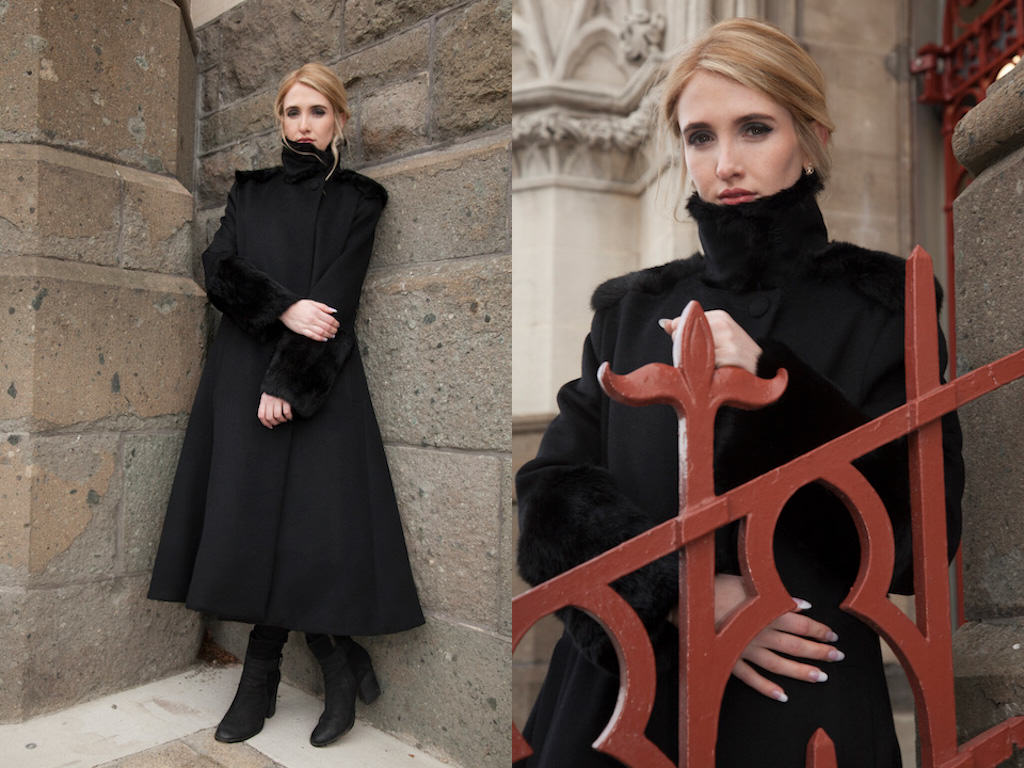
TaF: Most rabbit fur today comes from young animals bred for food, but the best pelts are said to come from adult wild rabbits that are taken in winter, when the fur is thick and even. Are you selective about the pelts you use?
Jane Avery: I am selective about the pelts I use. As a wild catch, it is variable in quality. I’m fortunate to work with a rabbiter who will grade the best pelts for me in the course of his work. The season here in New Zealand for optimum skins runs in winter from July to October when the chilly southerly winds are blowing into the New Zealand South Island high country. This means the rabbits have their winter coats on and are not moulting.
I like to use thick, fluffy furs with firm yet pliable skins suitable for construction in bomber jackets and structured coats. I also love the way many of the young doe rabbit furs are so sleek, smooth and floppy. These are great for scarves, capes and more unstructured styles. I am still experimenting with what is possible and learning so much every time I get a new batch of furs to work and create with.
So Does Rabbit Fur Shed?
TaF: Rabbit fur has a reputation for shedding easily, causing uneven patches in the fur. Is this reputation deserved, and are there ways to minimise shedding?
Jane Avery: The way to minimise shedding is to harvest during the winter when the animals are holding onto their fur for warmth. When I started out, I tested furs by continually rubbing and shaking them. My view is if you get them at the right time of year the shedding is tolerable.
Rabbit fur is what it is. It’s a natural resource and even with its reputation for shedding is a beautiful, practical material worthy of inclusion in high-end garments. Looked after well, it will look good and retain its warmth-giving properties for many, many years. It’s important to look after it properly such as being aware of not continually slinging leather bag straps on your shoulder or rubbing with car seatbelts. At least when it sheds you know the little bits are safely bio-degrading in the environment and not polluting the planet like the microfibres shed from synthetic “furs”.
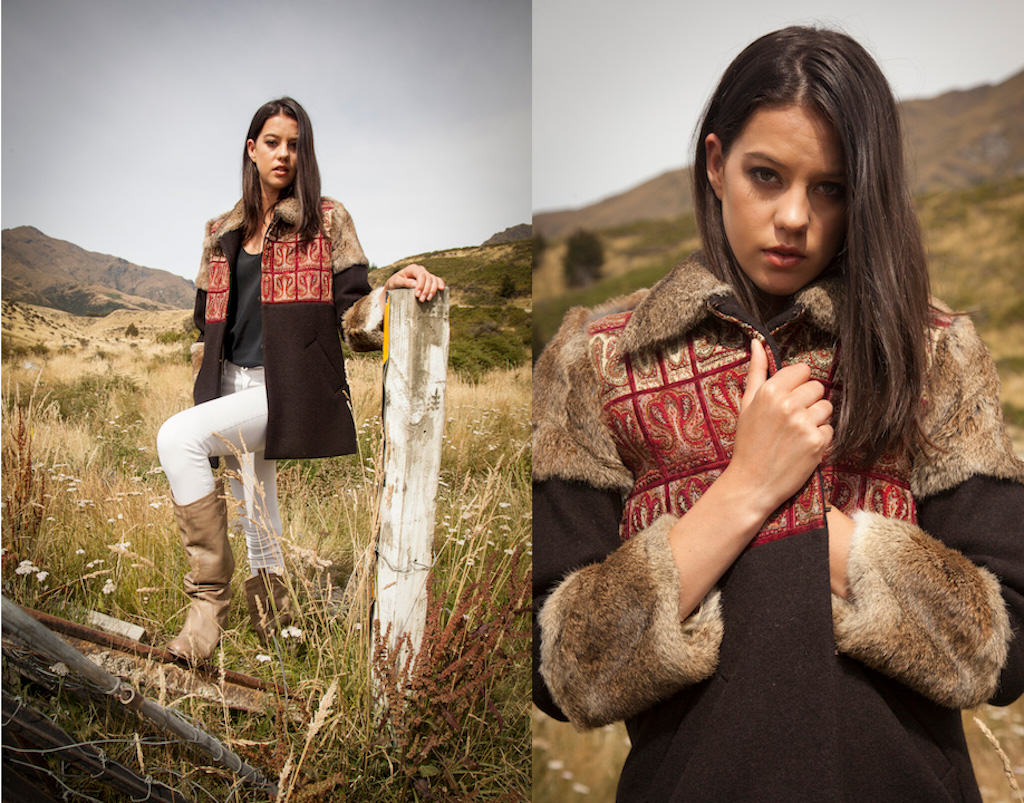
TaF: Possums are also considered a pest in New Zealand. Is possum fur something you’d consider using?
Jane Avery: Lapin was founded on the notion of creating attention for the very under-utilised pest-resource of New Zealand wild rabbit. However it is just a name and I’m certainly not closed to using New Zealand possum fur as my business grows. From an aesthetic point of view, I like possum fur when it has been shorn down to a nice soft pile. As with rabbit fur, the creative possibilities with this pest, notorious for destroying our native forest habitats, are many.
TaF: Another source of fur which has a small but growing following is vintage furs which are remodeled and recycled. Is this something you would consider doing?
Jane Avery: I like the idea of repurposing vintage furs, and yes, it’s something I’m open to working with as my business develops. From my own wardrobe I wear a vintage chinchilla-rabbit coat which I found in a Salvation Army op-shop. It sheds like you wouldn’t believe so I’m banned from sitting in my son’s plush car seats when I have it on!
SEE ALSO: 5 great ways to recycle old fur clothing.
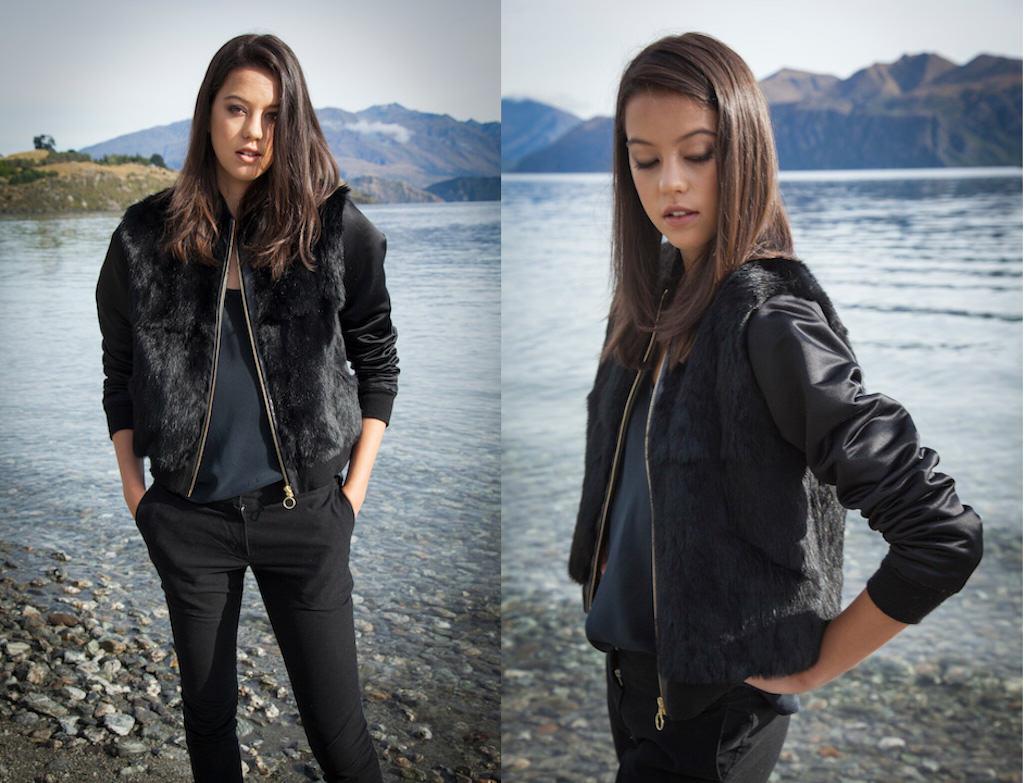
TaF: How do you feel about using farmed fur, such as mink or fox? An argument in favour of using farmed fur is that it takes pressure off wildlife populations, and in fact most of the demand for fur these days is met with farmed fur.
Jane Avery: Personally I would not use farmed fur for Lapin. It would be contradictory to Lapin’s essential message and philosophy.
I feel I am well enough informed about the whys and wherefores of fur farming and I understand the animal welfare standards are generally high, and in many cases higher than other industries exploiting animals for their meat and skin. As a sewer I also respect the tradition and craftsmanship of the fur industry. But farmed fur is not something that I would purposely seek out as a product to work with.
I find reassurance in the fact that New Zealand wild rabbits, an introduced species, are essentially having a marvellous time living natural, free lives, eating and breeding in the great outdoors. At least when they meet their deaths at the hands of a rabbiter they are free, albeit in the wrong place in the world. If they were not an ecological problem in this country, I would not be exploiting their fur for fashion, nor would I seek out other furs … aside perhaps for possum.
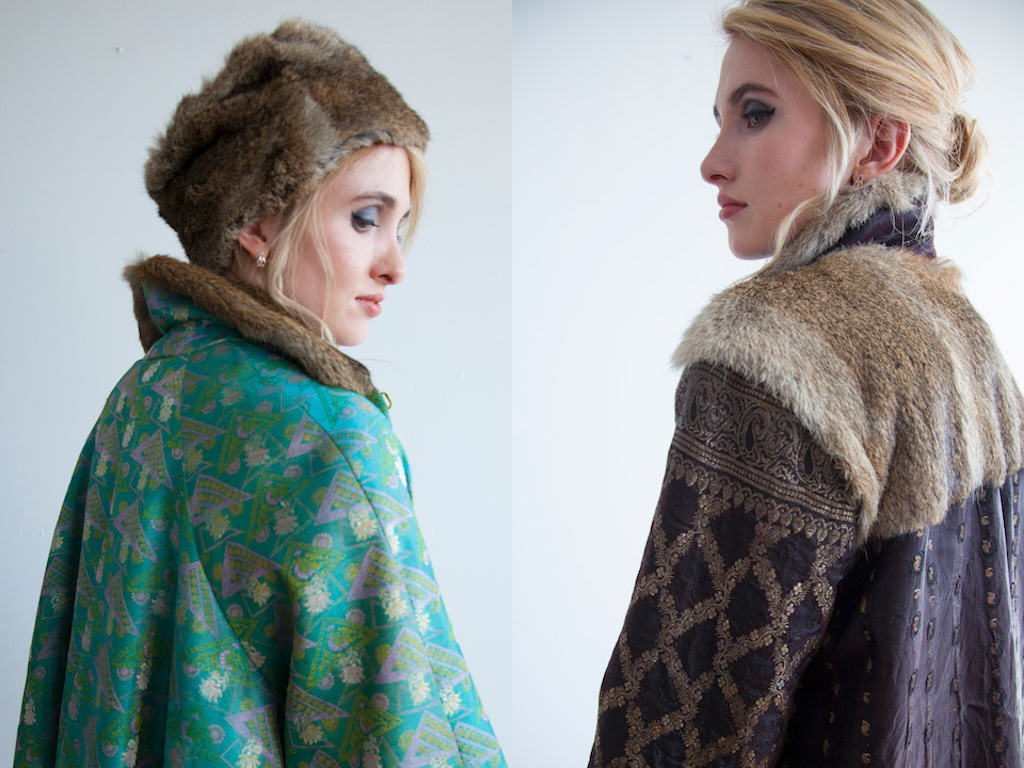
TaF: North America has its own problems with invasive nutria as well as indigenous furbearers that cause problems if their populations are not managed. For example, muskrats destroy marsh habitats, beavers cause flooding, and coyotes prey on livestock and are expanding into urban areas where they prey on pets and bite children. Are you supportive of using these species for their fur, provided it is done sustainably?
Jane Avery: To me it’s all about context. The world we live in is so very different to the world of 150-200 years ago. Sure, North America has its problems with invasive species too, and certain situations demand certain responses. If it’s deemed these animals must be “sustainably” culled then it would be disrespectful not to make practical use of their fur.
With the New Zealand rabbits, the context is created by human history. The tragedy is that they were introduced to this country in the first place.
I believe anyone in the business of exploiting animals for what they can provide to humans should check their moral compass on a regular basis. We shouldn’t necessarily do things just because that’s the way we’ve always done them. Everything must be considered within its realistic context and with the good of the environment central to decision-making.
***
SEE ALSO: Inside a rabbit fur fashion designer’s 10 sqm solar-powered eco cabin in Central Otago. This NZ Life.










